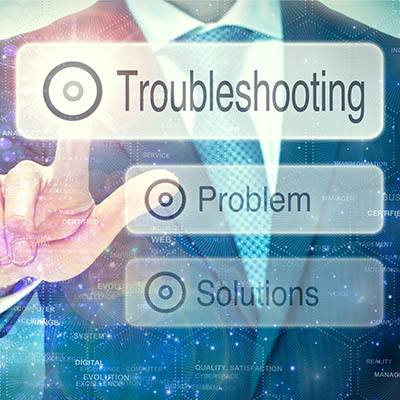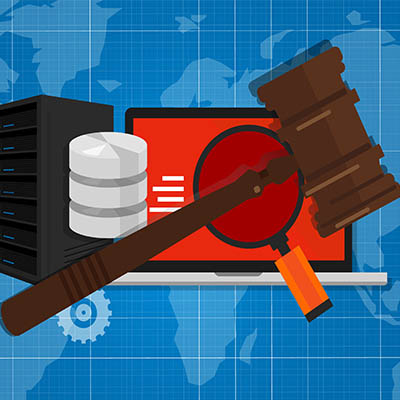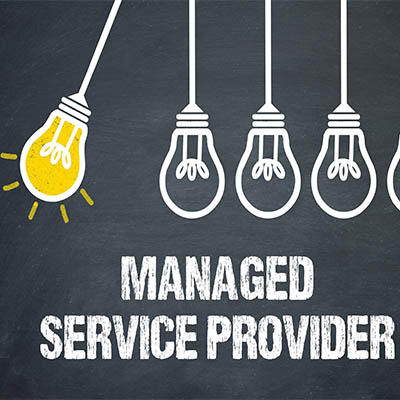Log4j is a major vulnerability that has a widespread impact across a wide range of technology. We can’t stress how serious this is, and your business needs to take action right away.
Sometimes it can be challenging to manage your IT solutions, but much of the advice that applies to technology is just general advice for living a good life. Let’s take a deeper dive into these ideas and see if we can apply certain life lessons to a business IT setting.
When you suffer from a technical difficulty, it’s your responsibility to ensure that it is handled in a timely fashion, whether it is reporting the issue to IT or taking care of it yourself. The process of troubleshooting, however, can save you from waiting around while IT tinkers with your device’s settings. Let’s examine the five stages of troubleshooting and how you might try them yourself.
In certain industries that are steeped in tradition, it can often be challenging to meet the stringent security requirements in order to keep up with modern threats. Take, for example, the modern law firm. Just how does a law firm go about securing its data and technology, and what must be considered when implementing security solutions for these types of organizations?
There are generally two approaches to technology maintenance. One of them addresses issues as they appear, and the other involves addressing possible issues before they become operational problems. How does your business go about technology maintenance? If it’s the first, also known as “break-fix” IT, then you are going about things the wrong way and leaving a ton of savings on the table.
When it comes to your business technology, you shouldn’t settle for anything less than the best. Unfortunately, technology is one facet of running a company where many business owners feel they have the least amount of control, perhaps due to its many moving parts and overwhelming complexity. The question becomes one of how you want to approach managing your business’ technology and finding the right skill sets to do so.
No one likes to imagine the worst-case scenario, but as a responsible business owner, you have no choice but to see the bad before the good. After all, the investments that you make in the future of your organization mean nothing if you have no power to preserve it in the event of unfortunate circumstances. Due to the nature of technology, it is an ideal place to start thinking about preventative and proactive measures to keep your future secure.
Small businesses are often in a precarious position with technology management, struggling with budgeting and acquisition of new technology as well as the difficulties that come with hiring top talent. Thankfully, they have an ace up their sleeves that allows them to stay competitive: managed IT services. With a great managed service provider helming their technology strategies, small business owners have a lot less to worry about than they might otherwise… at least in terms of their technology, anyway.
Regardless of what your business does, there is a good chance that it relies pretty heavily on technology. When that technology falters, so does your business. Sure, this might be for a couple hours at a time, but it all adds up and has a major impact on the success of your business. Many organizations have outsourced their IT support and management, but could benefit from a more proactive approach than the one they currently employ. Today, we will take a look at some of the priorities that businesses should consider when choosing an outsourced IT provider. Proactive Management One of the most crucial elements of a good managed IT services platform is the proactive approach to management. This is due to the fact that by mitigating downtime, an organization will be able to function more efficiently. When we talk about proactive management, we are mainly talking about constant remote monitoring of a network and infrastructure. While some outsourcers will just remotely fix problems that an organization reports, a managed IT services provider will continually monitor the network and infrastructure and use automation to ensure that all of a business’ IT is running smoothly. The whole strategy is to keep downtime to a minimum through conscientious care of the hardware and network using cutting-edge tools designed to automate many of the countless tasks that are needed to do so. The best outsourced IT services will absolutely include proactive monitoring. Backup and Disaster Recovery Sometimes when a business outsources their IT support, they are left to find their own backup system. This can create unnecessary costs, as most managed IT service providers (MSPs) make a point to mention that their backup and disaster recovery platform is central to their offering; and why not? Controlling your data is effectively having control over one of your business’ best assets. A well-functioning BDR should have the ability to backup all assigned data systems incrementally. That way the backup gets as much of your work saved as possible, protecting your business from data loss brought on by any issue, including ransomware, natural disaster, or simple user error. Security Consulting The traditional outsourced IT or break/fix vendor would never consider proactively helping a business avoid the litany of security threats that are out there today. Their business model suggests as much. With an MSP, however, your network’s security is paramount to their ability to be profitable. How’s that? The more problems you have with your network and infrastructure the more time and effort they need to take to ensure your IT is running as promised. As a result, for the MSP to succeed, your business needs to succeed. The IT technicians that work in managed IT services are typically some of the most proficient technicians in your area. They can lend a great deal of knowledge and expertise to keep your business technology assets secure and running as intended. This includes security for your network and infrastructure, your mobile strategies, and even your cloud infrastructure and resources. Patch Management Another proactive measure that a good MSP will deliver is patch management. Most of your supported software continuously releases patches to keep it from being a pathway for infiltration from nefarious outside entities. A good IT services provider will ensure that your software is not only monitored, […]
Adobe Flash, once one of the most utilized pieces of software on the Internet is being retired by the software giant. Support will stop on December 31, 2020 and like any other piece of retired software, you should remove it from any systems you have that still run it.










